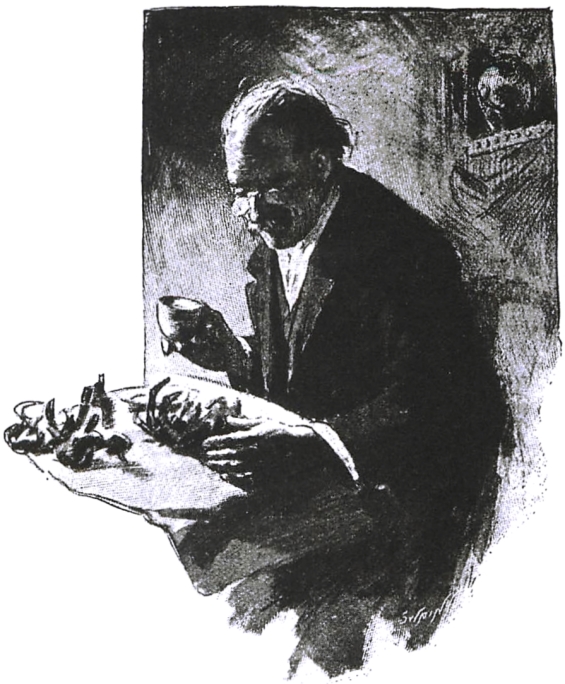“The Flowering of the Strange Orchid” is a short story by the English author H. G. Wells (1866–1946), first published in the 2 August 1894 edition of the Pall Mall BudgetWeekly magazine published in London from 1868 until 1920. and subsequently included in The Stolen Bacillus and Other IncidentsCollection of 15 short stories by H. G. Wells, first published in 1895. (1895) and The Country of the Blind and Other StoriesCollection of 33 short stories by H. G. Wells, first published in 1911. (1911).[1] The story, told by an unidentified third-party narrator, concerns a collector of orchids who grows an unknown species which develops aerial rootlets that attach themselves to his skin and suck his blood.
Synopsis
Winter-Wedderburn, the story’s main protagonist, is an amateur collector of orchids who lives a normally quiet life alone with his housekeeper, a distant cousin. He is a “shy, lonely, rather ineffectual man, provided with just enough income to keep off the spur of necessity, and not enough nervous energy to make him seek any exacting employments”. But he craves some excitement in his life, and is attracted to the sale of some plants gathered around the Andaman Islands[a]The Andaman Islands form an archipelago in the Bay of Bengal between India and Myanmar, called Burma in Wells’s time. by a fellow orchid collector, Batten, who it appears was killed by “jungle-leeches”.

Wedderburn returns from the sale with several plants, one of which he explains to his housekeeper is of the same type as that discovered crushed under Batten’s dead body. His housekeeper takes an instant dislike to its ugly shape, “like a spider shamming dead”. After a few days of attention in Wedderburn’s hothouse the plant starts to grow aerial rootlets, “like little white fingers poking out of the brown”; eventually the orchid produces three large white flowers, which produce an “overpowering sweetness”. Initially Wederburn is delighted, but he soon begins to feel unsteady and collapses on the floor of his hothouse.
Some time later Wedderburn’s housekeeper enters the hothouse looking for him, as he has not appeared for tea at half-past four as is his custom. She finds him lying face up on the floor with a tangle of the orchid’s rootlets attached to his chin, neck and hands, and manages to drag him out and tear the rootlets away, leaving him “white and bleeding from a dozen circular patches”.
In her efforts to save Wedderburn the housekeeper had been forced to smash the windows of the hothouse, so by the following morning all the orchids are dead. “But Wedderburn himself was bright and garrulous upstairs [in bed] in the glory of his strange adventure.”
Commentary
In “The Flowering of the Strange Orchid” Wells is exploring the fundamental contradictions between the “natural Paleolithic savage” within us and the “moral creature of civilisation”. The story’s opening sets up the opposition between Wedderburn’s modern, artificial world, and the “primitive natural world of the Andaman Islands”, a two-world structure that appears in many other of Wells’s short stories. The orchid is a symbol of both worlds, the decadent and the dangerous; once it has transformed the hothouse into a dangerous tropical jungle, Wedderburn’s housekeeper has to resort to the violence of smashing the windows to restore a civilised order.[2]
See also
- H. G. Wells bibliographyList of publications written by H. G. Wells during the more than fifty years of his literary career.
Notes
| a | The Andaman Islands form an archipelago in the Bay of Bengal between India and Myanmar, called Burma in Wells’s time. |
|---|
References
Bibliography
External links
- Full text of “The Flowering of the Strange Orchid” at Project Gutenberg
